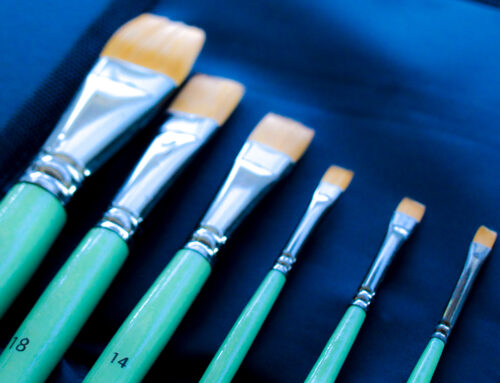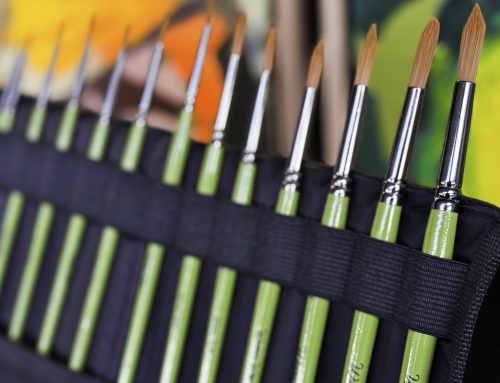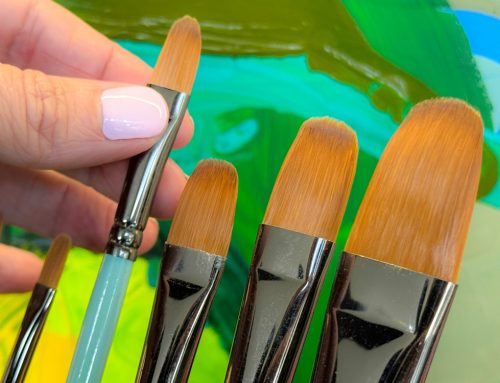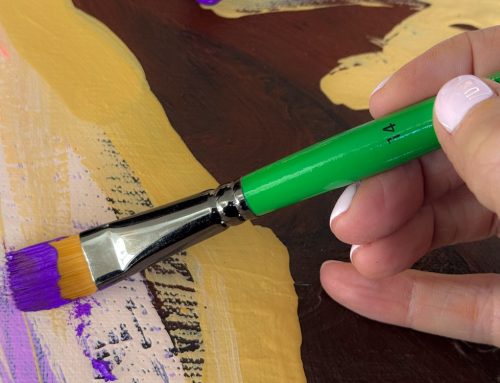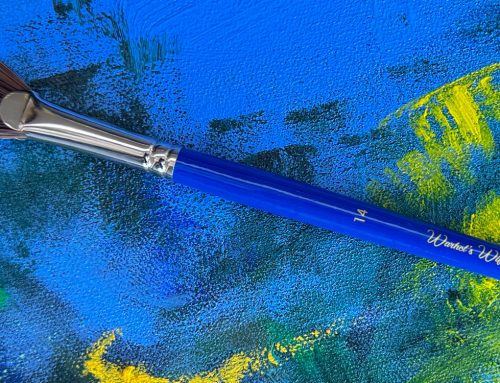When working with resin and pigments, selecting the right canvas is crucial to achieving the best results. Resin art requires a sturdy, well-framed surface that can handle the weight and durability of the resin. Thin canvases will warp under the pressure of resin over time, making the importance of a strong, high-quality canvas evident. This article will explore the best canvas options, paints, and pigments for resin art and how to ensure your canvas is well-prepared to create lasting, professional artwork.
Canvas for Resin: Selecting the Right Canvas
A quality resin canvas is essential for creating art that stands the test of time. Resin can be heavy, and applying it to thin or poorly constructed canvases can cause them to bend, warp, or even break. It is crucial to choose a sturdy, well-framed canvas that can withstand the weight and movement of resin.
When deciding on the best canvas for resin, opt for canvases with strong wooden frames. Thin-profile canvases are not robust enough and will likely warp under the weight of resin over time. A deep-edge canvas with a thick wooden frame, at least 3.5 cm deep, offers excellent support, ensuring the canvas remains stable and flat throughout the resin curing process.
Warhol’s Wife and Titian Canvases: Strong Enough for Resin Art
If you are looking for a reliable resin canvas, Warhol’s Wife and Titian canvases are exceptional choices. Warhol’s Wife canvases are known for their durability and ability to withstand heavy art mediums like resin. They come with thick, sturdy frames that provide excellent support and prevent warping when cared for correctly.
Titian canvases are also highly recommended for resin art. These canvases are made from premium materials, such as Belgium linen, which is strong enough to hold large amounts of resin and pigment without bending. Warhol’s Wife and Titian canvases are ideal for artists who want to create long-lasting resin pieces with professional results.
Warhol’s Acrylic Paint: The Perfect Backdrop for Resin Art
Acrylic paint is one of the best mediums to use as a base layer when creating resin art. Warhol’s acrylic paint, in particular, provides a vibrant, durable, and flexible base that pairs perfectly with resin. When applying resin over Warhol’s acrylic paint, the colours remain vivid and sharp, even after the resin cures. The paint does not react with the resin, allowing the pigments to shine through.
Acrylic paint dries quickly, and its versatility makes it the perfect backdrop for resin applications. Whether using it to create abstract backgrounds or intricate designs, Warhol’s acrylic paint ensures that your resin artwork will have a professional, glossy finish. Ensure the acrylic paint is fully dry before applying resin to avoid chemical reactions or bubbling.
Freaky Frida Colour Shot Pigments: Perfect for Resin
Freaky Frida Colour Shot pigments are a fantastic addition to any resin artist’s toolkit. These highly pigmented powders are perfect for resin, providing deep, rich colours that blend seamlessly with the resin medium. When you use Freaky Frida Colour Shot pigments, you can create custom hues and effects, giving your artwork a unique, vibrant appearance.
These pigments are finely ground, ensuring they mix smoothly into the resin without clumping or settling at the bottom. Freaky Frida Colour Shot pigments come in various colours, making them ideal for subtle and bold designs. By combining resin with these pigments, artists can create stunning works with unparalleled depth and intensity.
Freaky Frida Alcohol Inks: Ideal for Resin Tinting
Freaky Frida alcohol inks are another excellent product for artists looking to tint their resin. These inks are specifically formulated to blend effortlessly with resin, providing vibrant, transparent colours that can be layered for unique effects. Alcohol inks offer a dynamic way to add depth, contrast, and highlights to your resin art.
When using Freaky Frida alcohol inks, you can create swirling, marbled designs by applying them directly to wet resin. The alcohol ink spreads and mixes beautifully with the resin, creating soft, flowing patterns. These inks are perfect for creating abstract designs and landscapes or enhancing fine details in resin art.
Resin Art Process: How to Use Resin on Canvas
Creating resin art requires a systematic approach to ensure the best results. It is crucial to start with a well-prepared, sturdy canvas that can handle the weight and pressure of resin. Thin-profile canvases are not strong enough to stop the canvas from warping over time, so choosing a deep-edge, well-framed canvas for resin is the first step.
- Prepare the Canvas: Begin by selecting a firm and well-framed canvas. Warhol’s Wife or Titian canvases are great options for resin art. Tape the edges of the canvas to protect them from excess resin drips.
- Prime and Paint: If you use acrylic paint as a base, ensure it is fully dry before applying resin. Warhol’s acrylic paint works perfectly as a backdrop for resin, providing a vibrant and durable surface.
- Mix the Resin: Follow the instructions carefully to mix your resin to avoid air bubbles. All resin is different; this is a crucial step.
- Add Pigments or Inks: At this stage, you can add Freaky Frida Colour Shot pigments or alcohol inks to the resin. Stir the pigments or inks into the resin until the desired colour is achieved. Ensure even distribution of colour to avoid streaks.
- Pour the Resin: Once mixed, pour the resin evenly over the canvas. Use a palette knife or spatula to spread it evenly across the surface. You can also tilt the canvas to help the resin spread naturally.
- Create Effects: If you use alcohol inks, apply them directly onto the wet resin to create flowing, marbled designs. You can use a heat gun to manipulate the resin and inks, creating dynamic patterns.
- Let It Cure: Resin takes 24 to 48 hours to cure fully. Ensure the canvas is lying flat in a dust-free environment during this time. Avoid moving or disturbing the canvas to prevent imperfections.
- Remove Tape: Remove the tape from the edges when the resin is partially cured. You now have a beautiful, glossy resin artwork.
Experimenting with Resin: Finding What Works for You
- There is no right or wrong way to create resin paintings. Experimentation is essential, as each product reacts differently. However, starting with the right canvas ensures ongoing success. Avoid hanging your finished artwork in direct light, as inks may naturally fade over time. Despite using strong canvases, warping can still occur in extreme conditions. Knowing these factors helps you create long-lasting resin art.
Final Thoughts: The Right Canvas for Resin is Key to Success
Selecting the right canvas for resin is crucial to ensure a long-lasting and professional finish. Strong, well-framed canvases such as Warhol’s Wife and Titian provide the durability needed to withstand the weight of resin without warping. High-quality acrylic paint, such as Warhol’s, creates a vibrant backdrop, while Freaky Frida pigments and alcohol inks enhance layers within your resin art.
By following the right techniques and choosing the best materials, you can create stunning resin artwork that showcases your creativity and lasts for years. Remember, always start with a sturdy canvas for resin to ensure the best results.
VIPurpose Canvas for Resin Rewards
With competitive prices and dedication towards our customer satisfaction, we here at Art Materials Australia pride ourselves on providing you with the best canvas for resin rewards. Sign up for our VIPurpose points program today and get even better discounts through our store and online purchases on all the art materials you need.
- Shop Titian Cotton Canvases
- Shop Warhol’s Wife Canvases
- Shop Warhol’s Wife Acrylic Paints
- Shop Freaky Frida Alcohol Inks
- Shop Freaky Frida Colour Shot Pigments
Contact us
If you have any queries, please do not hesitate to contact an Art Materials Australia creative member.
Text: 0411248217
E: orders@artmaterialsaustralia.com.au
Join us: Facebook, Instagram, TikTok, Pinterest or Youtube.


